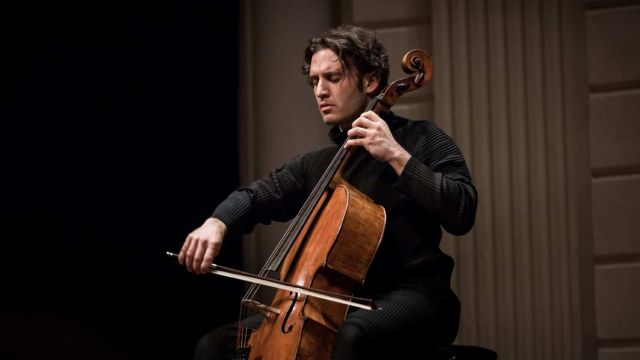Elgar’s Cello Concerto and Shostakovich’s Symphony No. 1
This concert is an incredible combination of musical masterpieces. Edward Elgar’s Cello Concerto, his last major work, was written at the end of World War I – and Shostakovich’s tense, suggestive Symphony No. 10 was written in 1953 after the death of the Soviet oppressor Joseph Stalin. Both speak, as only music can, across the barriers of language to express the universal emotions of suffering, loss, and bitter victory. Both take the musicians, and the audience, through torment and turmoil to eventual triumph. Both are evocative … yet are very different.
Elgar’s wife Alice described the Cello Concerto as a “lament which should be a war symphony” and certainly the four movements reflect the varying implications of a lament … grief, sorrow, regret, and occasional elation.
Cellist Nicolas Altstaedt, “one of the most sought-after and versatile artists” of today, found every possible intimation of those emotions in his interpretation of Elgar’s complex and contrasting reflections on four years of war. With the orchestra, led by visiting conductor Sir Donald Runnicles, the tension behind each of the four movements of the concerto is mirrored in his body, in his face and eyes, in his deft, fast fingers and the poised purposeful power of his bow.
Altstaedt’s investment in his performance and the music is total because he believes that “music should always give a feeling to people that they hear something that we cannot put into words, that is much bigger than what we do in our daily lives”.
If Altstaedt is right, then Shostakovich’s symphony gave “a feeling” that reflected not only the fear and oppression of Stalin’s violent dictatorial rule of the Soviet Union – but could well be a musical manifestation of similar fear and oppression emanating from the actions and ambitions of dictatorial governments today.
The harsh intensity of the second movement of the symphony invokes fear and even terror – and could summon contemporary images of Ukraine or Afghanistan or Sudan. I am not qualified to write about the complexities of Shostakovich’s composition or how he wove the instruments and themes together to create the atmospheres that pervade and interact and call back to each other – or the intensity and hopeful triumph of the final movement.
Suffice to say that Sir Donald and the wonderful musicians of the Sydney Symphony Orchestra certainly made this performance of Shostakovich’s very provocative symphony an experience for the audience that was, indeed, very “much bigger than what we do in our daily lives”.
Mirage, the composition that introduced this concert, is by young Australian composer, arranger and collaborative artist Alex Turtley. It is a new work commissioned by the SSO through the Sydney Symphony Orchestra's 50 Fanfares Project. In it Turtley separates the orchestral brass instruments and moves them far away from each other. Some of the musicians were “socially distanced” along the gallery behind the orchestra. Others stood at the back of boxes in the hall itself. All were conducted by Sir Donald Runnicles as they called out to one another in Turtley’s “interwoven melodies” creating what the composer himself describes as a “shimmering quality … that underpins the central theme and title of the work”, namely the refraction of rays of light in a mirage. This harmonic interplay of the horns was an intriguing introduction to the music that was to come.
Carol Wimmer
Photogapher: Eduardus Lee
Subscribe to our E-Newsletter, buy our latest print edition or find a Performing Arts book at Book Nook.

